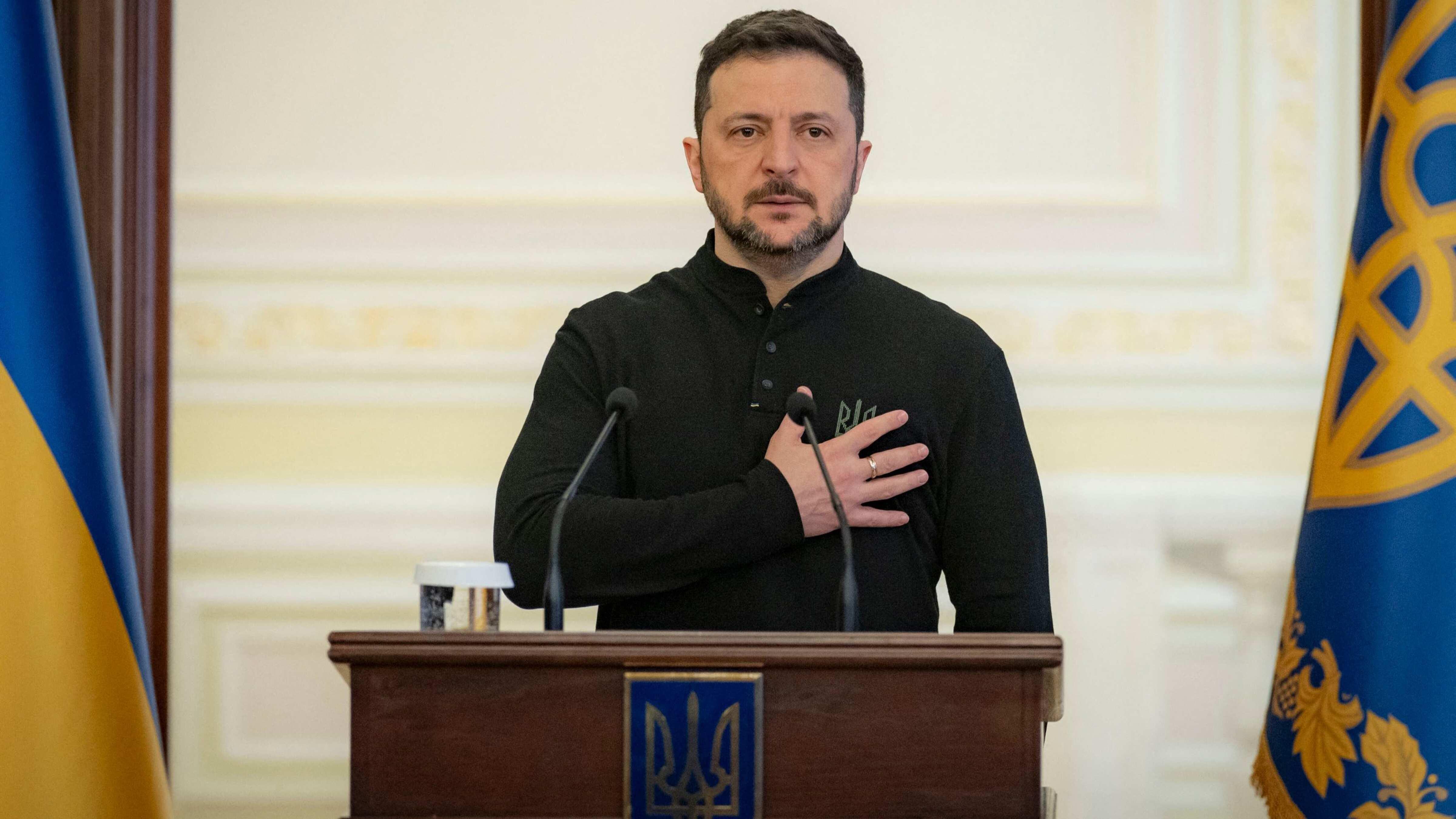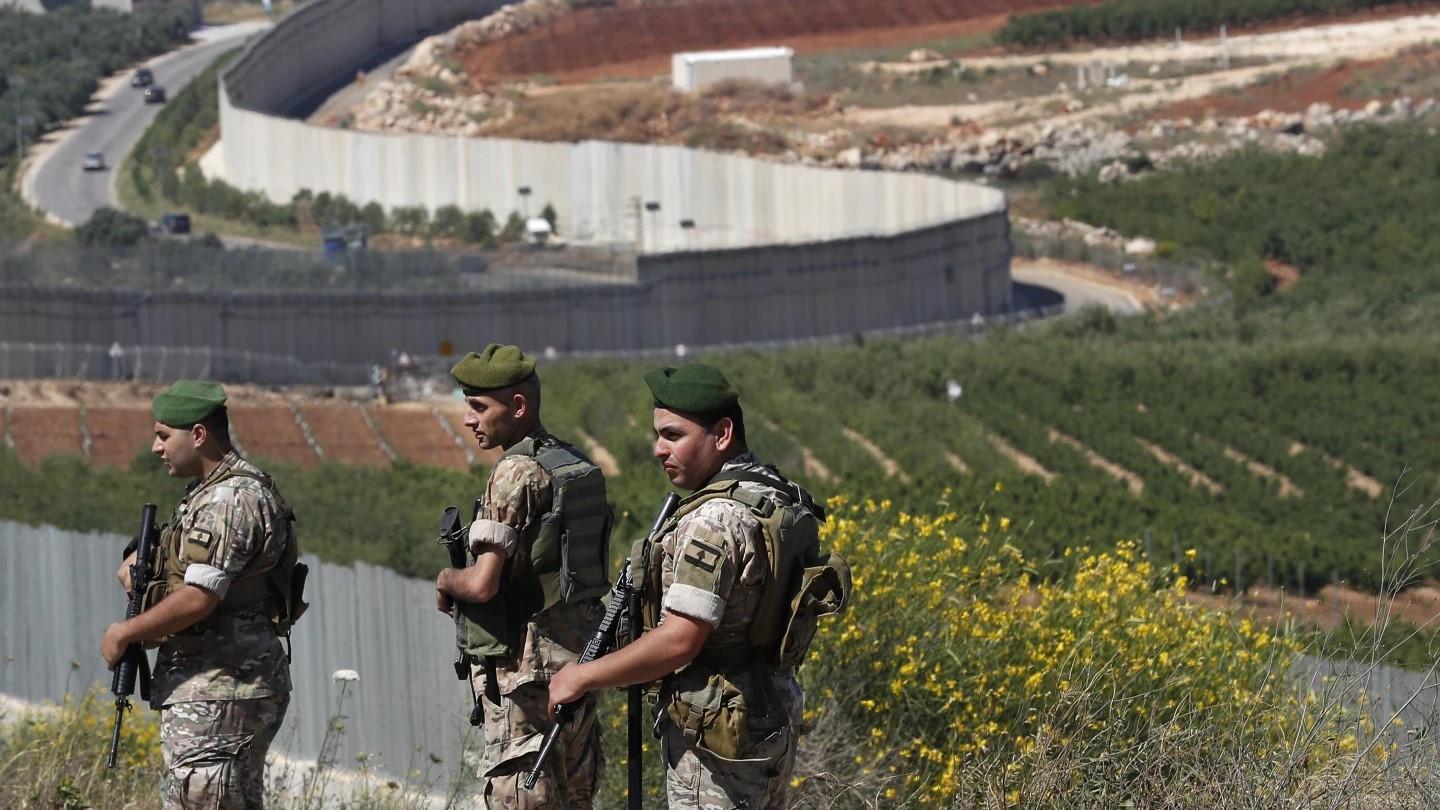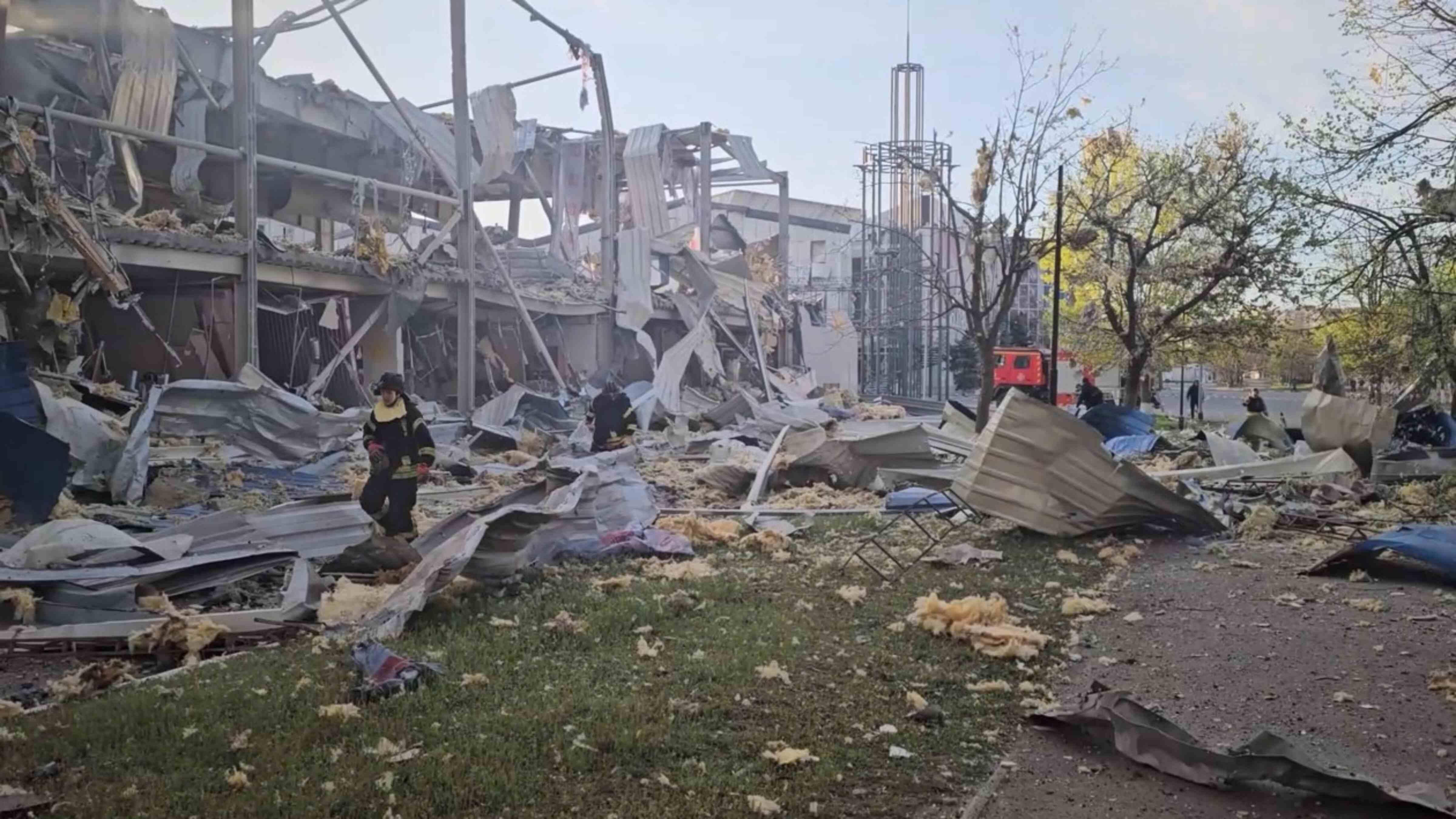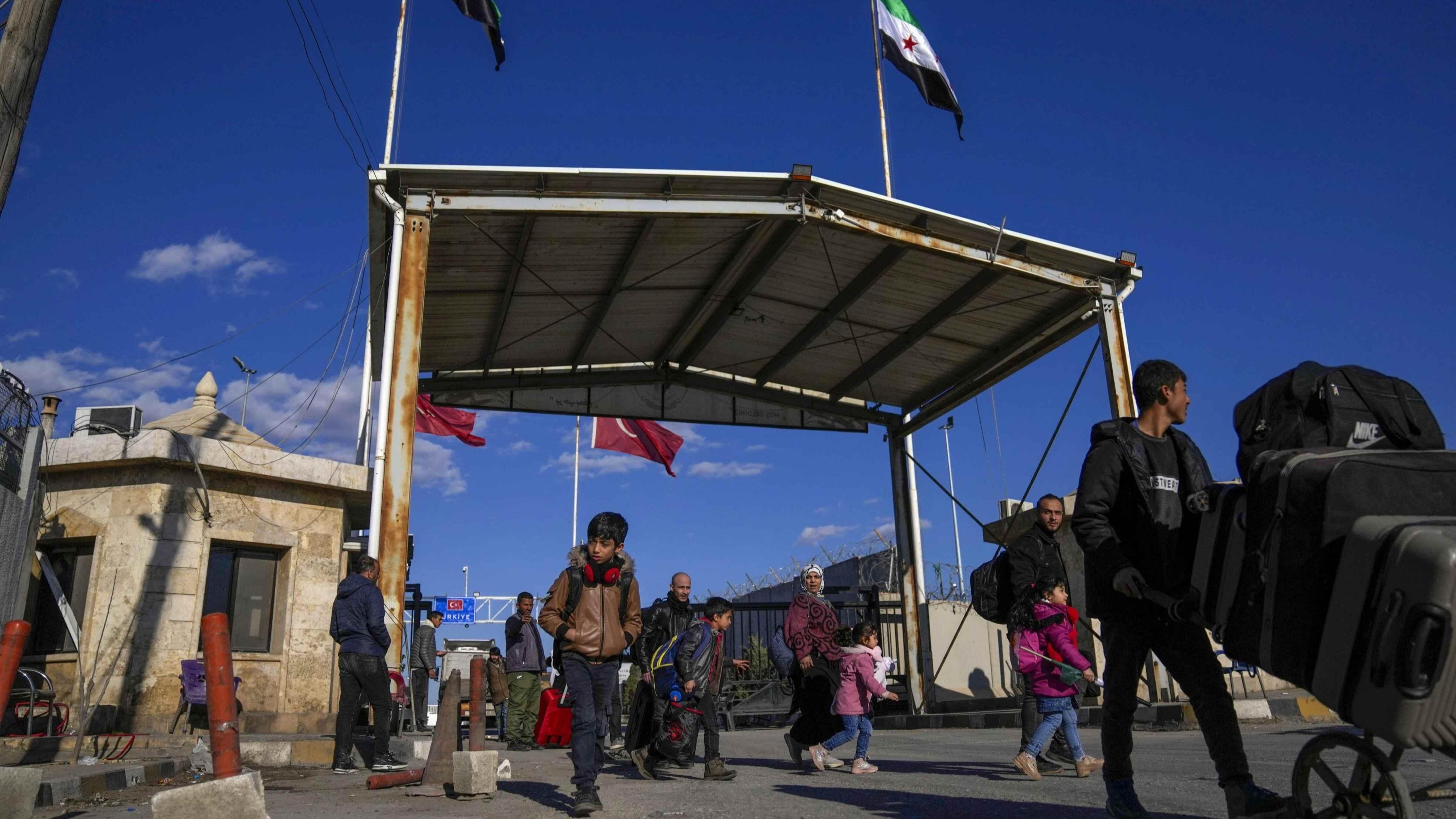Russian forces link up with separatist allies in key coastal territory: Ministry
KYIV
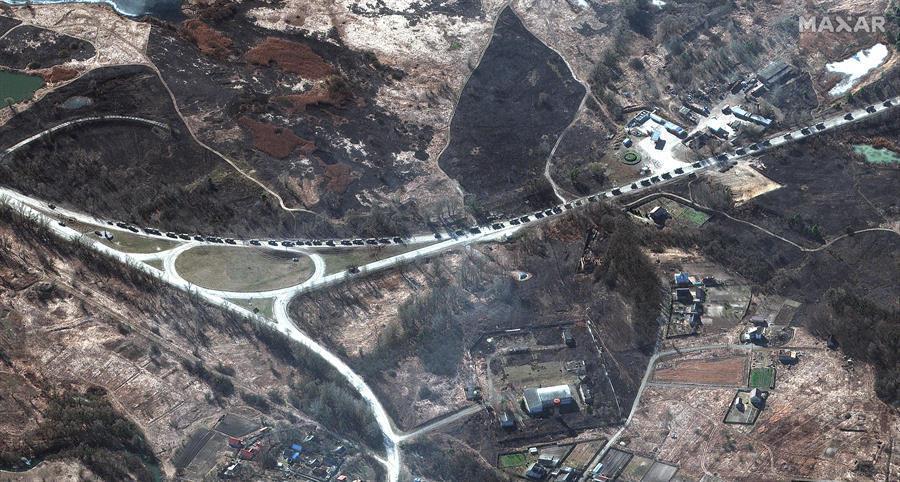
Russian troops and pro-Moscow rebels have linked up in a key region along the Azov Sea coast in eastern Ukraine, a defence ministry spokesman said Tuesday, on the sixth day of Moscow’s invasion of Ukraine.
Defence Ministry spokesman Igor Konashenkov said in a statement that rebels had "joined the military units of the Armed Forces of the Russian Federation, which took control of the regions of Ukraine along the coast of the Sea of Azov".
Russian strikes pounded the central square in Ukraine’s second-largest city and other civilian targets Tuesday and a 40-mile convoy of tanks and other vehicles threatened the capital. Ukraine’s embattled president accused Moscow of resorting to terror tactics to press Europe’s largest ground war in generations.
With the Kremlin increasingly isolated by tough economic sanctions that have tanked the ruble currency, Russian troops advanced on Ukraine’s two biggest cities on Day 6 of an invasion that has shaken the 21st century world order. In Kharkiv, a strategic eastern city with a population of about 1.5 million, at least six people were killed when the region’s Soviet-era administrative building was hit. Explosions tore through residential areas, and a maternity ward relocated to an underground shelter.
Ukrainian President Volodymyr Zelenskyy called the targeted attack on Kharkiv’s main square “frank, undisguised terror,” blaming a Russian missile and calling it a war crime. “Nobody will forgive. Nobody will forget. ... This is state terrorism of the Russian Federation.”
In an emotional appeal to the European Parliament later, Zelenskyy said: “We are fighting also to be equal members of Europe. I believe that today we are showing everybody that is what we are ... We have proven that, as a minimum, we are the same as you.”
In addition to the strikes on cities, reports have emerged that Moscow has used cluster bombs on three populated areas. If confirmed, that would represent a worrying new level of brutality in the war _ and could lead to even further isolation in Russia.
Already, with Western powers sending weapons to Ukraine and driving a global squeeze of Russia’s economy, President Vladimir Putin’s options have diminished as he seeks to redraw the global map _ and pull Ukraine’s western-leaning democracy back into Moscow’s orbit.
The Kremlin denied Tuesday that it has used such munitions and insisted again that its forces only have struck military targets _ despite evidence documented by AP reporters of shelling of homes, schools and hospitals.
Unbowed by Western condemnation, Russian officials upped their threats of escalation _ days after raising the specter of a nuclear attack. The Russian defense minister vowed Tuesday to press the offensive until it achieves its goals, while a top Kremlin official warned that the West’s “economic war” against Russia could turn into a “real one.”
A first round of talks Monday between Ukraine and Russia yielded no stop in the fighting, though both sides agreed to another meeting in coming days.
Throughout the country, many Ukrainian civilians spent another night huddled in shelters, basements or corridors. More than a half-million people have fled the country, and the U.N. human rights office said Tuesday that it has recorded the deaths of 136 civilians, including 13 children. The real toll is likely far higher.
“It is a nightmare, and it seizes you from the inside very strongly. This cannot be explained with words,” said Kharkiv resident Ekaterina Babenko, taking shelter in a basement with neighbors for a fifth straight day. “We have small children, elderly people and frankly speaking it is very frightening.”
A Ukrainian military official said Belarusian troops joined the war Tuesday in the Chernihiv region, without providing details. But just before that, Belarusian President Alexander Lukashenko said his country had no plans to join the fight.
The precision bombing of Kharkiv’s Freedom Square _ Ukraine’s largest plaza, and the nucleus of public life for the city _ was a turning point for many Ukrainians, brazen evidence that the Russian invasion wasn’t just about hitting military targets but also about breaking their spirits.
The strike blew out or shattered windows and walls of buildings that ring the massive central square, which was piled high with debris and dust. Inside one building, chunks of plaster were scattered, and doors, ripped from their hinges, lay across hallways.
“People are under the ruins, we have pulled out bodies," said Yevhen Vasylenko, representative of the Emergency Situations Ministry in Kharkiv region. In addition to the six killed, he said 20 were wounded in the strike.
Regional administration chief Oleh Sinehubov said that at least 11 people were killed and scores of others were wounded the day before, during Monday’s shelling of the city.
One after the other, explosions burst through a residential area of Kharkiv in one video verified by AP. In the background, a man pleaded with a woman to leave, and a woman cried.
Determined for life to go on despite the attacks, hospital workers transferred a Kharkiv maternity ward to a bomb shelter. Amid makeshift electrical sockets and mattresses piled up against the walls, pregnant women paced the crowded space, accompanied by the cries of dozens of newborns.
Russia’s goals in hitting central Kharkiv were not immediately clear. Western officials speculated that it is trying to pull in Ukrainian forces to defend the city while a larger Russian force encircles Kyiv. They believe Putin’s overall goal is to overthrow the Ukrainian government and install a friendly one.
Zelenskyy said Russia was using the strikes to put pressure on his government. He did not offer details of the talks between Ukrainian and Russian envoys, but he said Monday night that Kyiv was not prepared to make concessions “when one side is hitting another with rocket artillery.”
Meanwhile, Russian troops advanced toward Kyiv, a city of nearly 3 million. The convoy of armored vehicles, tanks, artillery and support vehicles was 25 kilometers (17 miles) from the center of the city and stretched about 65 kilometers (40 miles), according to satellite imagery from Maxar Technologies.
In a worrying development, Human Rights Watch has said it documented a cluster bomb attack outside a hospital in Ukraine’s east in recent days. Local residents have also reported the use of the munitions in Kharkiv and the village of Kiyanka near the northern city of Chernihiv, though there was no independent confirmation.
The International Criminal Court chief prosecutor has said he plans to open a Ukraine investigation and is monitoring the conflict.
Flames shot up from a military base northeast of Kyiv, in the suburb of Brovary, in footage taken from a car driving past. In another video verified by AP, a passenger pleads with the driver, “Misha, we need to drive quickly as they’ll strike again.”
And Ukrainian authorities released details and photos of an attack Sunday on a military base in Okhtyrka, a city between Kharkiv and Kyiv, saying more than 70 Ukrainian soldiers were killed along with some local residents. The attack could not be immediately confirmed.
The Russian military’s movements have been stalled by fierce resistance on the ground and a surprising inability to dominate Ukraine’s airspace.
Ukrainians used resourcefulness to try to stop the Russian advance: On a highway between Odesa and Mykolaiv in southern Ukraine, residents piled tractor tires filled with sand and topped with sandbags to block Russian military convoys. In Kyiv, sandbags were heaped in front of doors and windows of City Hall.
In the face of that Ukrainian resistance and crippling Western sanctions, Putin has put Russia’s nuclear forces on high alert _ including intercontinental ballistic missiles and long-range bombers _ in a stark warning to the West and a signal of his readiness to escalate the tensions to a terrifying new level. But a senior U.S. defense official, speaking on condition of anonymity, said the United States had yet to see any appreciable change in Russia’s nuclear posture.
Western nations have increased weapons shipments to Ukraine to help its forces defend themselves _ but have so far ruled out sending in troops.
As far-reaching Western sanctions on Russian banks and other institutions took hold, the ruble plummeted, and Russia’s Central Bank scrambled to shore it up, as did Putin, signing a decree restricting foreign currency.
But that did little to calm Russian fears. In Moscow, people lined up to withdraw cash as the sanctions threatened to drive up prices and reduce the standard of living for millions of ordinary people.
The economic sanctions, ordered by the U.S. and other allies, were just one contributor to Russia’s growing status as a pariah country.
Russian airliners are banned from European airspace, Russian media is restricted in some countries, and some high-tech products can no longer be exported to the country. International sports bodies moved to exclude Russian athletes _ in the latest blow Tuesday, Russians were barred from international ice skating events.


